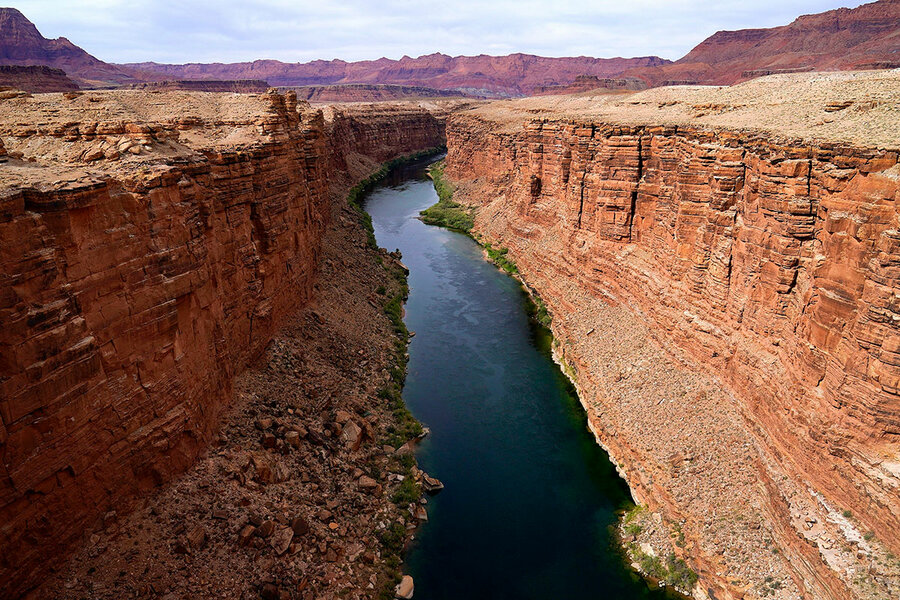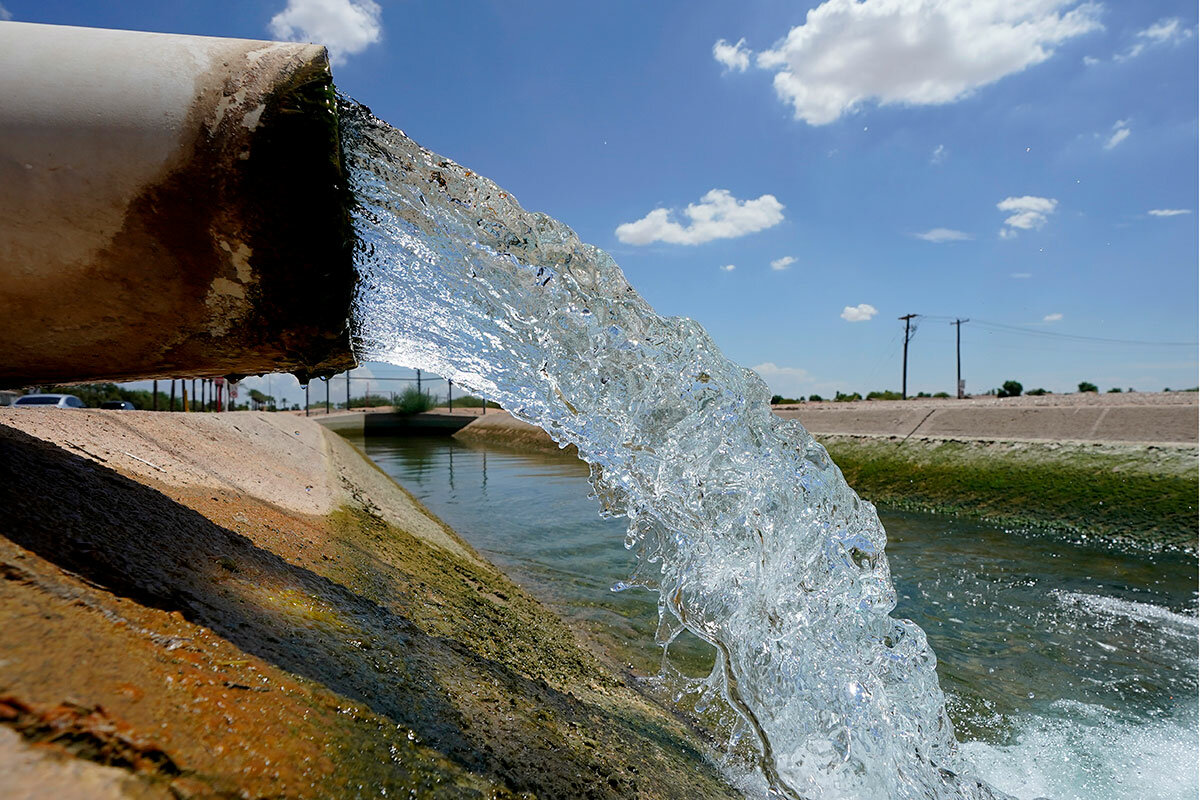Breakthrough Colorado River plan: The benefits and limits
Loading...
| DENVER
After nearly a year of gridlocked negotiations on the future of the stressed Colorado River, Arizona, California, and Nevada reached a breakthrough last week, uniting behind a voluntary proposal to further curtail their water use.
Some observers call the proposal “historic.” But how significant is it? Since the news broke, others have described the Lower Basin agreement as overhyped. It’s still just a proposal, and only a short-term one for managing critically low reservoirs, which threaten hydropower and water supplies for millions of people.
While some see the proposal as “the best thing since sliced bread,” others see it as a “Band-Aid on a bullet wound,” says Nevada negotiator John Entsminger. “Neither of those things is true,” says the general manager of the Southern Nevada Water Authority.
Why We Wrote This
A story focused onWith the Colorado River in near crisis, and talks on water use gridlocked, Arizona, California, and Nevada recently agreed to cut use. Their proposal shows progress, but has limits.
A more “balanced” approach, he explains, would be to say: “It’s a really good thing that the states reached an agreement, so that they have the space in the next 3 1/2 years to work on these longer-term, more durable issues.”
Below, the Monitor looks at the benefits and limits of the agreement among the Lower Basin states.
What’s the proposal?
Negotiators from the three Lower Basin states announced on May 22 a plan to voluntarily conserve at least 3 million acre-feet of water by the end of 2026 for $1.2 billion in federal compensation. The water savings amount is beyond their current obligations to conserve.
The available federal funds helped spur talks – and so did some relief from an especially wet winter. At the same time, the government had warned that it can impose unilateral cuts if stakeholders fail to agree on conservation plans.
Though the amounts aren’t finalized, California, the largest user by far, would conserve 1.6 million acre-feet. Nevada would save 285,000, leaving around 1.1 million in water cutbacks for Arizona to absorb. An acre-foot of water is roughly the size of an American football field covered 1 foot deep.
Under the plan, the federal funds would come from the Inflation Reduction Act and would help tribes, cities, and farmers offset conservation costs for most of the cuts. Those funds could, for instance, pay for more short-term fallowing of farmland and expand current water-saving programs.
The largest share of river water is claimed by California’s Imperial Irrigation District, which serves farms in the Imperial Valley. It could be a major contributor of usage cuts. The water district is pleased by the “plan that is based on voluntary, achievable conservation volumes,” said Henry Martinez, general manager, in a statement.
Nevada would continue rolling out its conservation plans, such as banning the use of Colorado River water for ornamental lawns, dubbed “nonfunctional turf.” The state, though, isn’t asking for a slice of funds. It would “bank” its share in the nation’s largest reservoir, Lake Mead, through 2026, with the possibility to recoup that water later.
How does it point to progress?
The history of water negotiations is a long and difficult saga, and merely reaching an agreement among Lower Basin users is a significant achievement, say experts. The proposal presents something of a breakthrough for Arizona and California, which have long argued over river use (even the Supreme Court has intervened).
“It was clear that we could end up in a place where forced, mandatory cuts by the federal government on the three Lower Basin states was not a necessity,” says Tom Buschatzke, Arizona’s Department of Water Resources director.
Negotiators got a wake-up call last June, when the commissioner for the U.S. Bureau of Reclamation told Congress that an additional 2 million to 4 million acre-feet of conservation were needed “just to protect critical levels in 2023.” The river, stressed by mega-drought and demand, was in a near crisis.
Federal officials analyzing the new Lower Basin proposal applaud the signs of cooperation.
What are its limits?
The deal isn’t final, and a public comment period follows. Even if the proposal is enacted, it would run only through 2026. That’s when current rules expire, requiring more negotiations about the river’s future.
Some experts say that the proposed 3 million acre-feet is insufficient given the stresses on the river. They also question the amount of federal moneys for short-term conservation. “We need to address this issue on a much more long-term basis,” says Mark Squillace, professor at the University of Colorado Law School.
For example, “we could use a lot of that money to permanently change the way we do irrigated agriculture in the western United States,” he says. Agriculture is by far the river’s biggest consumer.
Also, leaders of the Upper Basin, which includes Colorado, New Mexico, Utah, and Wyoming, want more details about the plan. The seven states, along with 30 tribes and Mexico, are yoked together by a complex, century-old legal framework that shapes the river’s use.
In April, the federal government published draft plans for potential changes to the operation of dams that manage reservoirs on the river. The plans spell out options for more mandated cuts to water users, which aren’t off the table.
The Lower Basin proposal adds another alternative. As the government reviews, it’s temporarily withdrawing its own draft. A final plan is expected later this year.









